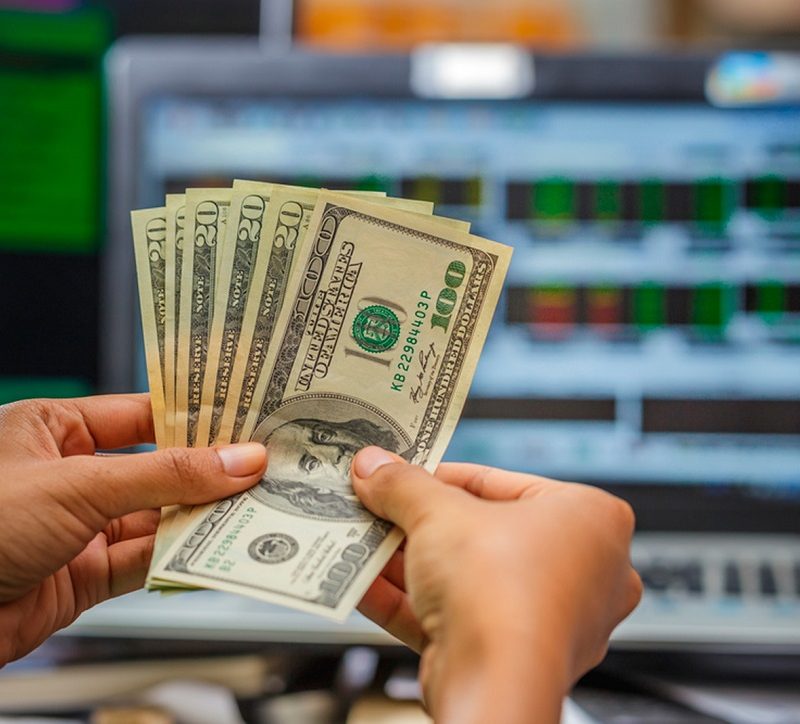The first step to creating a solid cashflow plan is to have the right banking structure in place. To be on top of your cashflow, you need to make sure you aren’t allowing the cost of your lifestyle to creep beyond what you can afford, and that you have a plan in place so that incoming funds seamlessly flow between accounts and expenses.
If you don’t have a plan, you are likely to lose funds to seemingly small expenses that add up significantly over time. Multiple bank accounts make you pay attention to those small things.
To me, budgeting is a bit like a diet. If it’s really strict, pretty bland and takes a lot of energy, it’s not going to last, and at some point you’re going to binge eat to make up for what you feel like you’ve been denied.
Comfort creep: the one aspect of your financial wellbeing you can controlRead more
Having six accounts sounds like a lot, but I promise you there’s a reason for each one. Together, they create an automatic system that helps you save, without feeling deprived.
Bank account one: the cash hub
The first account to set up or rename is the one that will have your income coming into it every week, fortnight or month. Ideally, this bank account shouldn’t have a debit card associated with it – and if it does, don’t keep it in your wallet.
This account is going to have all your direct debits to your other accounts attached to it, and it will house the money that you need to cover your bills and other expenses. Personally, this account is with the same bank I’ve been with since I got my first job as a teenager. I’ve had no reason to change it yet, as it doesn’t charge any fees.
Those who have a mortgage might like to consider structuring their cash hub as an offset account for their mortgage.
Second account: food, fuel and fun
The second account I recommend is your personal spending or your “food, fuel and fun” account. This account has a debit card associated with it, since it is the account that funds your weekly spending.
Rather than trying to stick with a budget and put aside savings all in one account, this account exists so you can give yourself a weekly spending allowance you cannot go over. Each week, on the same day, transfer your total weekly personal spending amount into this account.
Personal care, entertainment, dining out and clothing should be included in your personal spending, so make sure you allow for them when you’re deciding how much to live on each week.
This is literally how I manage my money. I have mine direct-debited and transferred into my account on a Thursday, because this is what works best for me. Maybe you want your “pay day” to be Mondays or Fridays. Whatever works – it actually doesn’t matter. What matters is that this is the only account you will have moving forward that has a debit card associated with it, in order to minimise “money leakage” and always be on top of your spending.
I have push notifications to let me know what I’m spending while using this account, so I always know how much money is sitting in it, and when I transfer money from my cash hub, it’s instant because I use BPay’s Osko.
Third account: emergency fund
This fund is so empowering, and is the start of your journey to financial freedom and security. Yes, it’s an emergency fund – and we’ve all heard of those before. It exists because we can’t predict when we will get a flat tyre, or need to pay an insurance excess or take unpaid leave from work.
But this fund is so much more than that – it is going to end up giving you the power to say no to any situation, place, relationship or job you don’t want to be in anymore. Sadly, more often than not, finance is a big reason why people don’t change their situations when they really want to. This fund is going to become your back-up plan. How much you have in here really depends on your life stage, your values and what makes you feel secure.
I know people who have $2,000 in their emergency fund, I know people who have three months’ worth of expenses in their emergency fund – and I even know someone who has three years’ worth of expenses in their emergency fund. This is completely up to you. But if you’d like a bit more guidance than that, personally I like the idea of three months’ worth of your bare basics expenses, because if something serious happens, you can cover yourself until you’re either back on your feet or your income protection insurance policy kicks in.
Australians more worried about money and less confident in government, Covid survey findsRead more
If you don’t yet have an emergency fund, building one should be your first financial priority – before you start contributing to short or long-term savings goals.
If you’re currently in debt, smashing down your debt absolutely needs to come first, but consider allocating a small amount of funds to this account each month, to help you sleep easier at night.
Then increase your contribution when your debt is under control.
Personally, I have this fund with the same bank as my cash hub. I want to be able to access this money easily if I ever need it.
Fourth account: short-term savings
This is going to be for goals you’re planning to achieve in the near term, like going on a holiday, purchasing something big or planning to get married. This account should be a fee-free, high-interest savings account. If you’re currently in personal debt or have a credit card, you won’t be contributing to this fund just yet – because your main goal should be to get out of debt.
Fifth account: long-term savings
This is where your funds for any medium- or long-term savings goals will live. This could be anything from saving for a home, working towards financial freedom or saving money towards the cost of having a family one day. This money is going to be there for the long term, so having it in a high-interest savings account is a good idea; or you could talk to a financial adviser about some ways to invest your money if you wanted to.
Sixth account: not an emergency but it still feels like an emergency
If you can think of a better, shorter and sassier name for this account, go for it.
This account has been really useful to me – it exists because sometimes you want to go to a friend’s birthday dinner, organised last minute, or you got invited to join in on an experience next weekend – but you don’t have the money in your everyday account to do so.
I strongly discourage dipping into your savings, and this is how I mitigate having to do that. In my mind, once your money is in your savings account it shouldn’t come out again until you’re achieving that savings goal. If you create the habit of pulling money out of your savings when you want something, you’re not putting Future You first.
This account exists so you don’t have to miss out on the things that are important to you – not so you can blow it all because you deserve to “treat yourself” following a bad week at work. That mentality is negative, and actually puts us in a worse financial position. After a bad week at work you’re going to sacrifice Future You? I don’t think so!
So, before taking money out of this account, I do want you to think about it, because it does have to be replenished at some point, but it’s my way of making sure you’re not missing out.
Savings and good money habits unfortunately don’t come without any sacrifice. While you won’t be able to rely on this fund every weekend, having it ticking over will mean you can still treat yourself without sacrificing your savings and investment goals.
Personally, at the end of every week (my money week being Thursday mornings) I transfer any additional cash I have left in my Personal Spending account into this fund to top it up. That way I can top it up without sacrificing my savings goals, and each week I get to start my personal spending on a clean slate.
-
This is an edited extract from She’s on the Money by Victoria Devine (published by Penguin Random House Australia) $32.99, out now.




